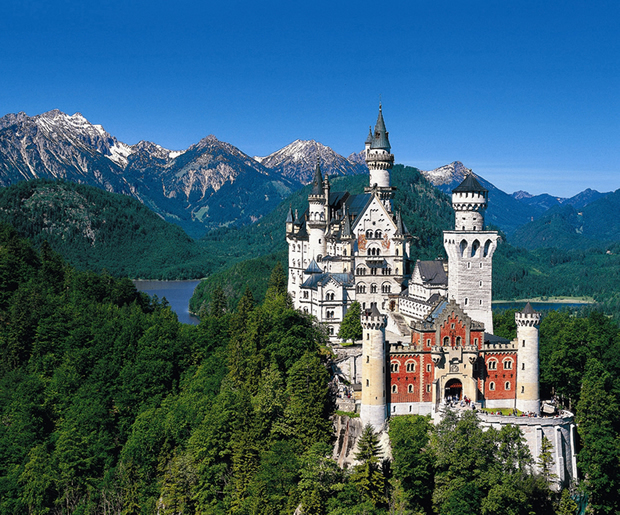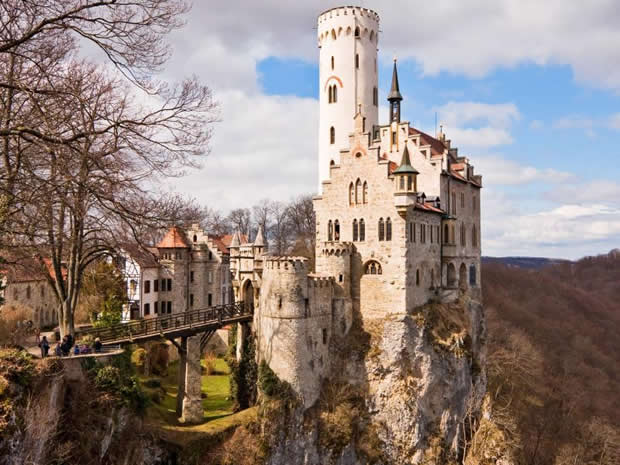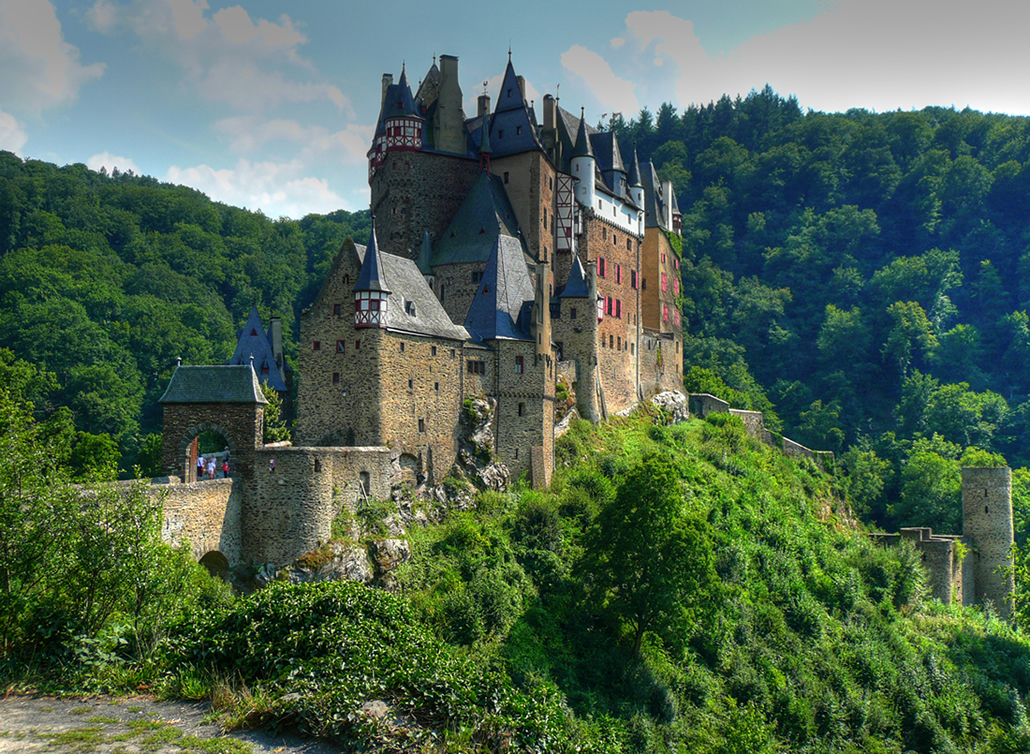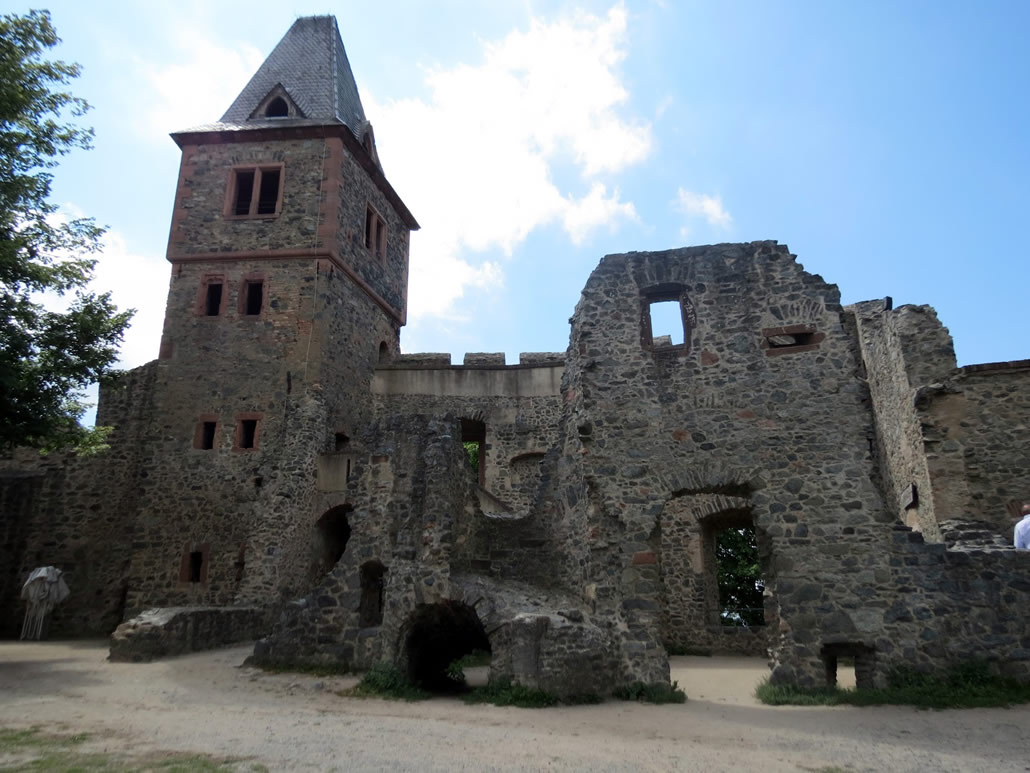Castles in Germany
Neuschwanstein Castle in Germany is considered one of the greatest castles in Europe.

Created by King Ludwig II of Bavaria in 1868, it was designed to become a hideaway as he became a recluse, immersing himself in a fantasy world. The King was considered mad and obsessive and he had two medieval castles blown up to provide the site for his fairytale castle, which was commissioned as homage to his idol, Richard Wagner. After the King’s death, the castle was opened up to the public and was the inspiration for Disneyland’s Sleeping Beauty.
Lichtenstein Castle is perched on the side of a cliff near Honau in Germany.

Built in the 1800’s, its appearance was inspired by a then popular novel, ‘Lichtenstein,’ which portrayed the regions chivalrous warriors of the Middle Ages. Famed for its large collection of historic weapons it is also a popular venue for weddings.
Burg Eltz is situated in a woodland valley near the river Rhine.

Its creation began in the 12th century and three separate fortresses, built at different times, created the current fairytale appearance. Burg Eltz is more of a grand home than a medieval fortress. To this day, it is still occupied by a branch of the Eltz family and contains collections of weapons and armour, which can be seen by the public.
Castle Frankenstein in Germany sits 400 feet above the Rhine Valley.

Built around 1252, it was owned by Lord Konrad II, Reiz von Breuberg, who named himself ‘von und zu Frankenstein’ meaning ‘stone of the Franks’. In the 17th century, it became home to the eccentric and controversial alchemist and scientist, Lord Konrad Dippel Von Frankenstein, who was obsessed with reanimating the dead. He also conducted experiments with animals and human body parts. Claims that the castle influenced the works of Mary Shelley remain controversial.
Lowenburg Castle sits within the Wilhelmshohe Hill Park at one end of the city of Kassel in Germany.

It was built in the period between 1793-1821 and designed to be a ‘romantic ruin,’ acting as a garden folly for the Landgrave Wilhelm IX. It is now regarded as one of the most important buildings of its genre and the first of the major neo-Gothic buildings in Germany.

